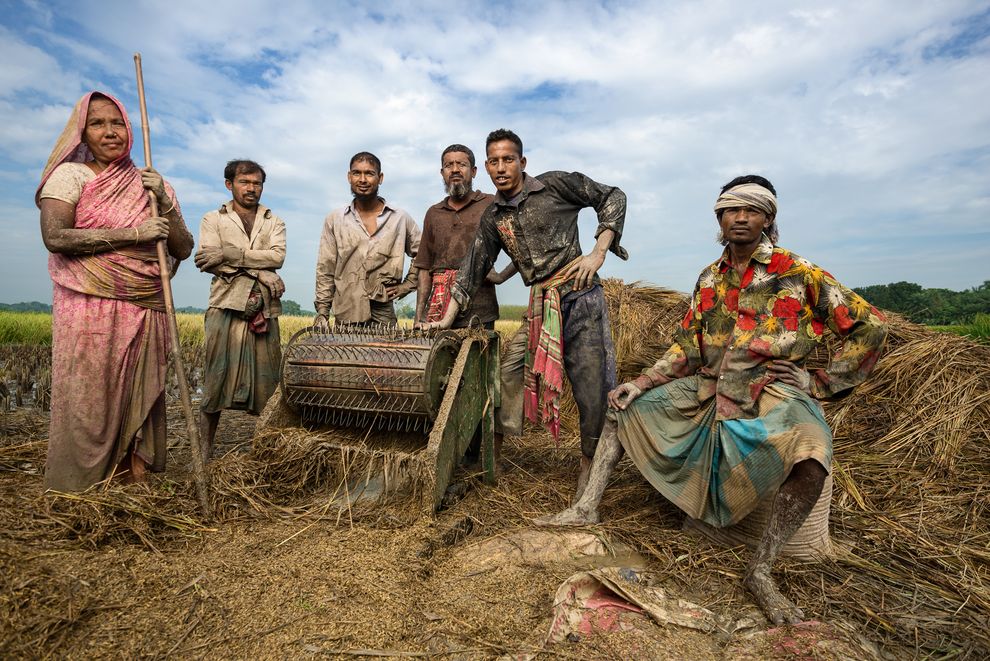Inside the Looming Food Crisis

We don’t worry much about food, especially when it is plentiful and cheap. Only when prices rise do we we pay much attention to any potential problems with the food supply. In the United States food has been relatively cheap for decades—typically costing less than 10 percent of our income—so we often take it for granted.
Perhaps we shouldn’t. Quite a few people these days aren’t taking food for granted, and it’s not just the more than 800 million people worldwidewho don’t have enough to eat, or the more than 47 million in the U.S. who need food assistance. Whether we’ll have enough food at affordable prices has been a particular concern for many scientists and economistssince price spikes in 2008 caused unrest in places such as Egypt, Bangladesh, and Haiti.
This week in Washington, the Chicago Council on Global Affairs, which for years has been immersed in questions about food and its supply—where it comes from, what kind and how much we grow, how we use or waste it, and whether we will have enough in the years ahead—gathered to discuss solutions to what its members see as an emerging food crisis.
These researchers see a collision ahead: between a rising world population that wants to eat more high-quality food such as meat and dairy, and a climate system that is diminishing harvests in many areas. Storms, floods, heat waves, and droughts are occurring with increasing frequency, trimming some crop yields across the planet.
That’s a problem, because we will need more harvests of the major grain crops—rice, wheat, and corn—in the decades ahead. Those crops are the basis of nearly all the food we eat—even meat, because we feed grains such as corn, wheat, and soy to meat animals.
How do we meet the challenge of dramatically rising food demand? Jonathan Foley, a University of Minnesota researcher, is among many seeking solutions. In the May issue of National Geographic, he outlines a five-step framework for feeding 9 billion people by mid-century. Foley’s article opens an eight-month series in the magazine on the future of food.
Beside the linkage between climate change and food supplies, this week’s Chicago Council meeting focuses on improving harvests in vulnerable regions such as sub-Saharan Africa and South Asia, where harvests are low or unreliable and the need for food solutions is escalating. Topics include “sustainable intensification” of agriculture, which means getting better yields without damaging the land and water; improving irrigation in Africa; and using field schools to teach improved farming techniques.
Climate change gets some attention too. The group is examining how agriculture—which is responsible for about one-third of all greenhouse gas emissions—can reduce its impact on climate through precision tillage and fertilizer use. Discussants also emphasized the need for accelerated crop research to breed more climate-resistant crops that can survive heat waves, droughts, floods, and saltwater.
The group issued a report today that calls for the U.S. to make food security—investments in research, education, technology, and data—a top priority for the long-term, especially in the face of documented climate impacts on harvests.
The U.S. Agency for International Development also announced aninitiative to help improve the nutrition of mothers and children in developing nations. It’s part of a broader program called Feed the Futurethat aims to help alleviate hunger by helping farmers grow more and better crops across the developing world.
USAID Administrator Rajiv Shah told attendees at the Chicago Council meeting Thursday that Feed the Future has lifted more than 12 million children out of poverty and improved the welfare of more than 7 million farmers.
The United Nations projected last year that the world’s population would reach 9.6 billion by 2050, up from nearly 7.2 billion now. A large portion of the increased food demand in decades ahead is projected to result from rising appetites for meat; several pounds of grain are needed to grow each pound of meat.
We are entering uncharted territory. The March report by the Intergovernmental Panel on Climate Change highlighted the vulnerability of food supplies to rising temperatures and extreme weather in years ahead. Studies already show that yields are being damaged by rising levels of carbon dioxide, increasing temperatures, heat waves, and droughts. The 2012 Midwest U.S. drought, for example, damaged crop yields and drove prices up.
Growing enough food for a booming world population as the climate changes is cited often as being among the greatest challenges to face humanity. Yet, young people who can help meet this challenge are not easy to find. One report this week indicated that U.S. agriculture is facing a shortage of trained scientists.
So not only must we grow more food, we must grow more people interested in growing more food.
Collected:http://news.nationalgeographic.com/

